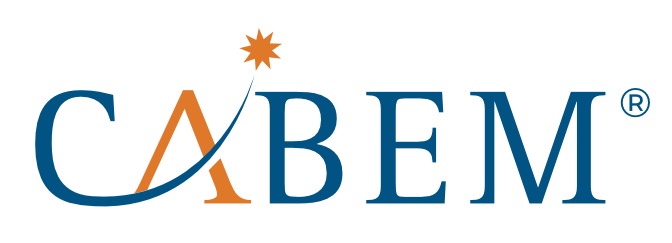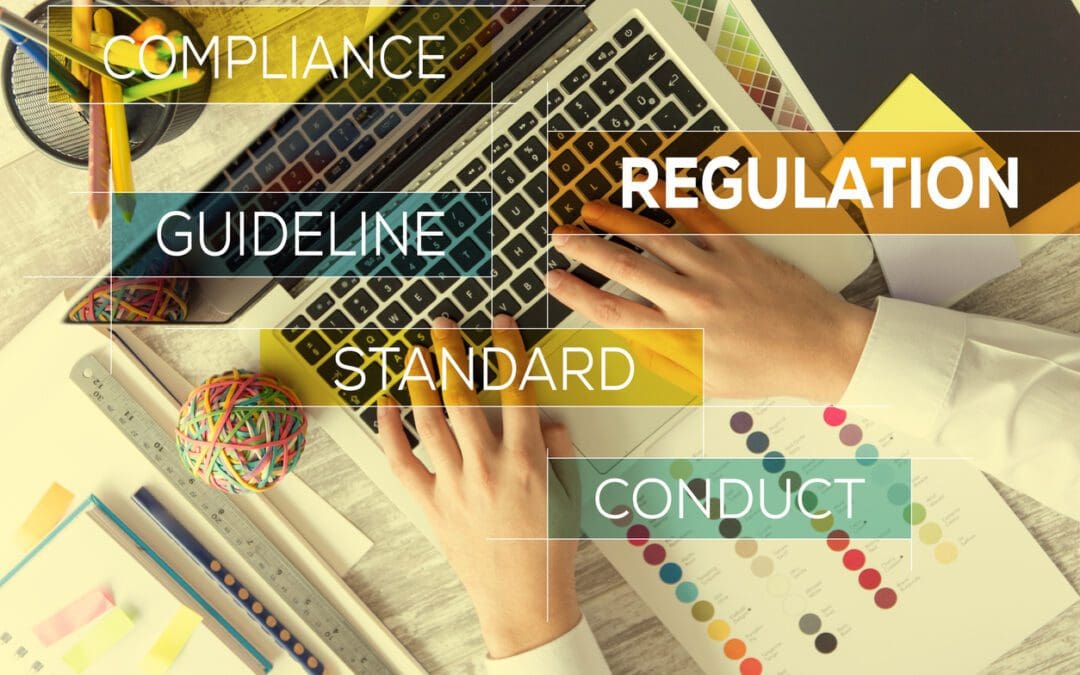The Benefits of Competency and Credential Management to Maintain Compliance
Regulatory compliance is when a business adheres to state, federal, and international laws and regulations relevant to its operations. In other words, it is a set of guidelines that the law requires organizations to follow. The specific requirements vary depending on the industry and type of business. Regulatory compliance ensures integrity, safety, and ethical behavior in industries. It helps drive accountability in the workplace.
Regulation and compliance become a threat when regulations are not followed, or compliance is not maintained. In a heavily regulated industry, it is important to have a competency management plan in place. Additionally, a competency management system will help organize and integrate all functions necessary to ensure regulatory compliance. It reduces risks to employees, contractors, the public, the environment, and the company. This article takes a closer look at competency management and credentialing and explores how they play a critical role in several major regulated industries.
What is Competency Management?
Competency is defined as the overall skills, qualifications, behaviors, and knowledge an individual has that is important to their job performance. Competency Management is a formal organizational approach that defines the competencies needed in a business. In a rapidly growing and competitive market, competency management allows employees to stay productive, master vital job-related skills, and have a clear understanding of what is expected of them. A strong culture of competency management adds to the value of any company because it works seamlessly to develop leaders and improve performance at all levels of an organization.
What is Credentialing?
Credentialing is the formal process of determining the qualifications of professionals and assessing their background and legitimacy. A credential is an award or accreditation given to an individual to verify a specific qualification or competence. Some examples of credentials are certifications, degrees, diplomas, licenses, and certificates. Credentialing helps reduce liability, achieve regulatory compliance, and retain talent by proving competency. It allows organizations to identify and prioritize content prior to developing specific objectives or standards. The competency model is also used to evaluate an existing credential to determine if it covers all the competencies required for successful performance in a job or industry.
Regulated industries understand that because of the nature of their business, they must adhere to certain regulations and standards. Here are some of the most common regulated industries that benefit from a Competency Management System to track and monitor credentials and compliance.
Regulation in Specific Industries:
Government:
Credentialing helps to ensure the accuracy of the information given by a representative of the government. It ensures that the individual has the knowledge and experience required to fulfill their duties, while also verifying that they are properly authorized to access confidential or restricted information. Credentialing can include background checks, interviews, and other forms of verification.
The use of credentialing within the government is critical in maintaining a safe and secure environment for citizens, as well as protecting the rights and privacy of those who interact with governmental entities. By ensuring that only those who are qualified and trustworthy have access to confidential or sensitive data, the government is able to provide citizens with peace of mind that their information is safe.
The CJIS Security Policy keeps professionals in criminal justice and law enforcement agencies at local, state, and federal levels in agreement with security standards for the use, transmission, storage, and processing of Criminal Justice Information (CJI). Compliance with the policy helps safeguard the integrity, confidentiality, and reliability of criminal justice systems. Reaching compliance is no small undertaking. It is the ongoing process of ensuring critical documents are safe and secure. A competency management system is crucial for the criminal justice system.
Healthcare:
A crucial aspect of the healthcare industry is the maintenance of high standards of safety in the medical profession. Medical credentialing verifies that nurses and doctors are properly trained and certified. Credentialing provides evidence of a medical professional’s medical license, preceding education, experience, and training. It is the process of granting a certificate or license through the assessment of an individual’s knowledge, skill, or performance level.
Credentialing ensures that healthcare individuals and organizations adhere to the letter of the law. Assessment and confirmation of the qualification of professionals help organizations save themselves from liabilities, fiscal loss, incompetent healthcare providers, compliance violations, and unwanted lawsuits.
Education:
Credentialing plays an important role in the education industry, verifying that educators have the knowledge, skills, and qualifications needed to teach. In order for an educator’s career to be long-lasting, it’s important that they are constantly looking for ways to grow and develop professionally. If someone wants to teach, they need to have a degree as well as either an elementary certificate or a teaching certificate from the state board of education. It is also important for teachers to renew their licenses every five years.
All U.S. public school teachers must be licensed. General requirements for teaching credentials include obtaining a Bachelor’s degree and completing a teacher education program. All 50 states, the District of Columbia, and Puerto Rico require teachers to be licensed in order to teach in public schools.
Construction:
Maintaining compliance in the construction industry is a challenge. There are extensive regulations that must be followed, it’s the law. In addition to contractual agreements between the owner and contractors, there are building codes, insurance, and bonding requirements, credit and background checks, payroll, lien requirements, and safety regulations that all must be addressed. There are tough penalties that follow for those that do not comply.
Ensuring that health and safety management systems are in place is crucial. Organizations in this industry have a moral and legal duty to make sure every person on a site is sufficiently competent to do their job and maintain compliance with regulations and certifications.
Every construction company must follow safety regulations. Compliance can be difficult to ensure at all times, especially since regulations often change over time. The use of technology and automation can help construction companies improve construction safety compliance and reduce their risk. An automated competency management program can help relieve some of the stress associated with trying to stay up-to-date with current construction regulations.
Automotive:
As the automotive industry changes, so do the safety and regulatory requirements. Companies now need to adopt new technologies and programs in order to stay in compliance with these standards, which puts increased demand on the organizations’ ability to staff accordingly. Employees that work on the production line need specialized skill sets to help with assembly, data entry, programming, etc., while management needs specialized skill sets like project management and financial forecasting. These competencies are not necessarily unique to the auto industry, but companies have found it difficult to find qualified individuals who can fill open positions quickly enough. The lack of experience is leading some businesses to look outside of their sector for talent, a trend that may become more common as tech companies increasingly collaborate with automakers.
The challenges in the automotive industry provide an opportunity for companies to rethink their strategies and embrace change and innovation. The industry is constantly evolving and businesses need to keep up with the latest trends and adapt quickly to the changes in the market.
Aerospace:
Cybersecurity is a serious threat to the Aerospace industry. Cybercriminals recognize the asset-rich potential of these organizations. This makes them attractive targets for criminals searching for vulnerabilities in every level of the manufacturing supply chain. Cybercriminals threaten the privacy and monetary aspects of the industry. Time, money, and resources must be devoted to the very latest cybersecurity technology to ensure the safety and protection of all sectors across the industry.
Maintaining compliance is one of the greatest challenges that the Aerospace industry faces. This ever-evolving field provides us with powerful and efficient ways to explore the skies and outer space. Companies must conform to the depth and complexity of safety and quality standards of excellence. This is crucial in order to reduce user or system error, maintain business agility, and drive the new product development process.
A Competency Management System is Needed
Competency Management is a fundamental part of regulation and compliance. Compliance and quality management processes have the best chance of succeeding in an organization when there is a configurable platform that allows you to model your organizational hierarchy to assign, prioritize, track, audit, and report activities by role, team, or organization.
One important innovation for competency management that helps organizations adapt quickly to shifting demand is competency management software. Technology is an integral aspect of our business lives and spans every industry. Software solutions are available now that are designed to streamline your internal operations, which increases both efficiency and compliance. Used properly, the right software can play an important role in keeping any regulated industry compliant.
Having a credentialing platform also acts as a single source of truth for all data and credentials, avoiding any duplicate or conflicting information. In the end, credentialing provides organizations with a competitive advantage, and it helps to attract and retain members. It improves the quality of service, product, and client interactions in any industry.
CABEM offers a way to make regulatory compliance easier. As your credentialing and compliance requirements evolve and grow, consider the benefits of implementing a system that allows you to track, renew, and monitor the necessary credentials of your team members automatically with software. CABEM has built a program that solves this need, called the Competency Manager. An automated competency management system, like CABEM’s Competency Manager, works efficiently to help organizations overcome the obstacles that regulated industries are facing, and achieve and maintain compliance.
If you would like to see a product demo of our competency and credentialing software system or ask any questions, visit our website.

